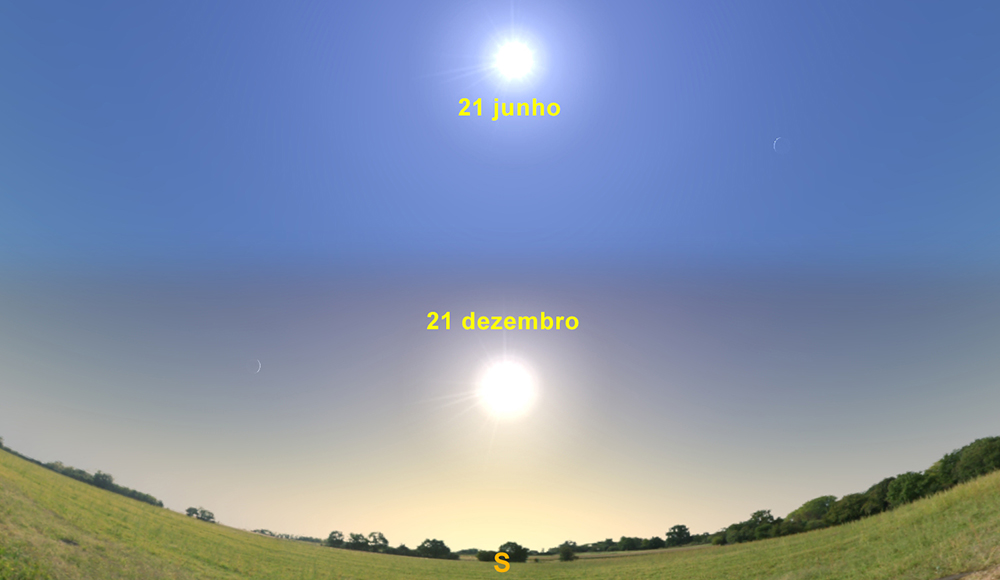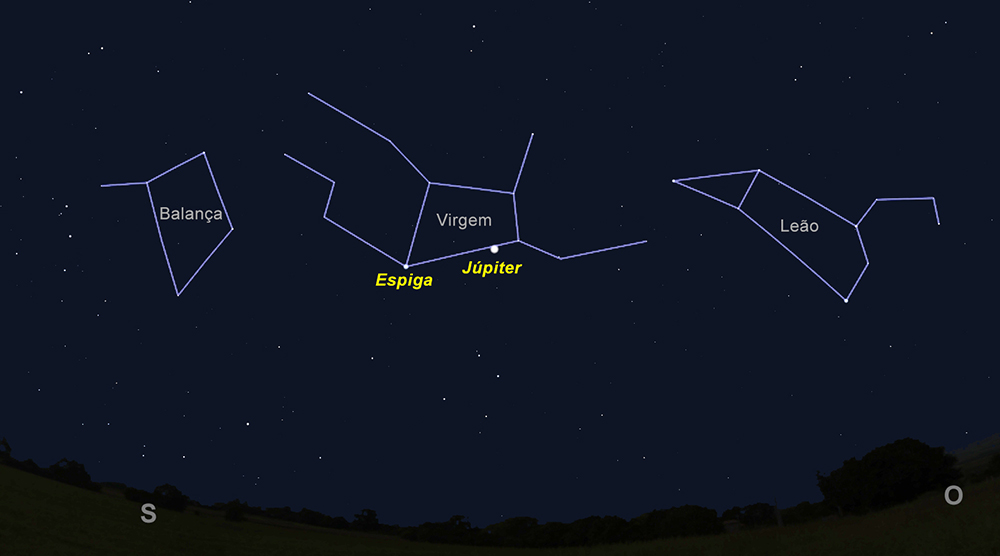 June is the beginning of summer, and it starts right away with the Moon in a crescent on day 1. Two days later, our natural satellite starts to skim Jupiter, the kind of “superstar” we see facing south, just outside dusk.
June is the beginning of summer, and it starts right away with the Moon in a crescent on day 1. Two days later, our natural satellite starts to skim Jupiter, the kind of “superstar” we see facing south, just outside dusk.
Jupiter is in the constellation of Virgo, right next to the Spike star. As for the Virgin, she is the Greek goddess Demeter (Ceres for the Romans), daughter of Cronos and Rhea, and goddess of agriculture. She is therefore often depicted holding a spike in one hand and a scythe in the other.
The Espiga star is 250 light-years away, but it's not really a star – it's a binary system. The two stars are extremely close to each other (only 18 million kilometers, or 3 times closer than Mercury is to the Sun), and so the gravitational pull distorts them until they are ovoid rather than spherical. Also because they are so close, they orbit around each other in just 4 days.
The largest of these two stars is more than 10 times the mass of the Sun and is one of the closest stars to us with enough mass to end its life in a supernova explosion.

Continuing its journey in the sky, on the 9th, the full moon reaches the planet Saturn, in the constellation Ophiuchus (or Serpentarium).
As the full moon is diametrically opposite the sun, in the sky, when one sets, the other rises (and vice versa), so we will be able to see the moon and Saturn throughout the night.
For those awake at dawn on the 10th (since it is Portugal's day and therefore a holiday), you can see Venus (to the east), the moon and Saturn (to the southwest). On the 17th, the Moon reaches the waning quarter.
And finally, summer! At 5:24 am on June 21st, the summer solstice occurs (in the Northern Hemisphere). It is on this day that the sun reaches the highest point in the sky all year round.
It is also the biggest day of the year, with the sun rising between 5:50 am in Bragança and 6:15 am in the Algarve, and setting between 20:55 in Faro, and shortly after 21pm in the North of Mainland Portugal.
In the Azores, the sun rises around 7:20 am and sets around 22:10 pm, while in Madeira it rises around 7:00 am and sets around 21:20 pm.
Good remarks!
Author Ricardo Cardoso Reis (Porto Planetarium and Institute of Astrophysics and Space Sciences)
Science in the Regional Press – Ciência Viva


















Comments